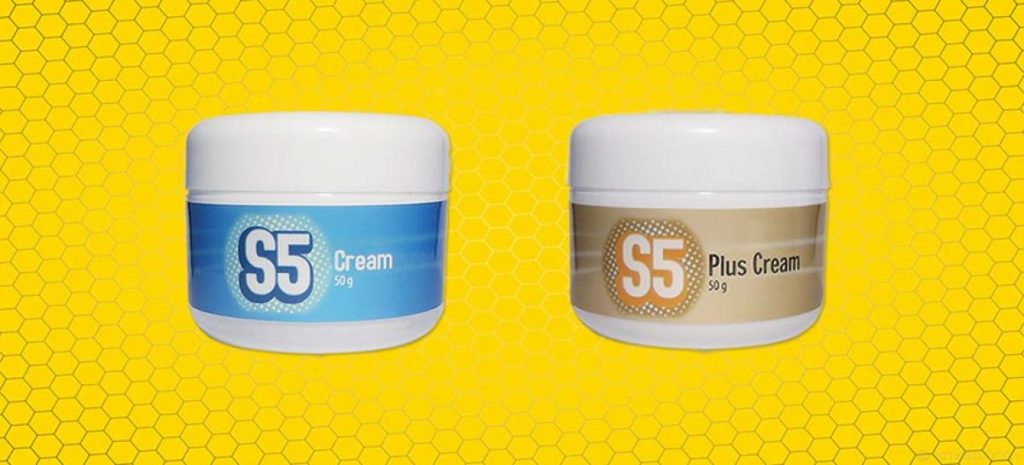Topical Spironolactone usually has a little a skunk scent. New formulations have actually been produced recently which deal with that issue as well as assist you focus on living your life. As a treatment for loss of hair nonetheless, what’s the big deal regarding Topical Spironolactone?
Putting it just, it’s been firmly developed that male pattern baldness is launched by DHT affixing to the receptor websites in the hair follicles.
Genetically, just the hair follicles on the top of the head are inscribed with the receptor websites, which describes why hair along the side as well as in the back is not shed with age.
The DHT connected to the receptor site is perceived as a foreign body as well as the immune system starts to damage the hair roots. This shortens the development stage and creates the hair shaft to become considerably finer in appearance. In extreme cases, only a vellus (thin, brief, pigment-free) hair continues to be.

Where To Get Topical Spironolactone Online?
Two web pages are readily available which explain the only two Topical Spironolactone items available (and where to get them): S5 Cream as well as S5 Plus Cream. We did a significant post on the launch of these 2 brand-new treatments lately. You’re urged to check it out, along with the item reviews committed to both:
- Topical Spironolactone S5 Cream – An Experts Review
- Topical Spironolactone S5 Plus Cream – Even Better?
Fortunately is that the follicles have the fundamental capability to grow to their previous dimension. Urged with the success of Propecia (Finasteride) to decrease the amount of DHT in the scalp of individuals with male pattern baldness (MPB), scientists reconsidered at existing medications that are understood to work as anti-androgens.

A Topical Antiandrogen Alternative to Propecia?
There needs to be strict criteria for an anti-androgen that can be utilized to combat or perhaps reverse pattern alopecia. The optimal anti-androgen should have the adhering to residential or commercial properties:
- It needs to have potent anti-androgen activity.
- It must uniquely avoid or successfully compete with DHT without altering testosterone degrees.
- It should be effective topically, so it can be conveniently applied with minoxidil remedies.
- Even though it’s easily soaked up right into the skin, it needs to not have any kind of systemic impacts.
That’s a tall order.
Remarkably enough, there is such a medication: Spironolactone.
For over thirty years Spironolactone has actually been utilized as an antihypertensive and a diuretic. Extra lately, it has been used to treat hirsutism (excess body hair) in females. Using Spironolactone to treat hirsutism may seem inconsistent, yet body hair (e.g. breast, face, axilla, pubis, and so on) is advertised by testosterone and also considering that Spironolactone is a potent anti-androgen, it’s efficiently utilized to get rid of undesirable hair on the body.
On the top of the head, where the hair is negatively affected by DHT, Spironolactone has just the opposite effect. Spironolactone exhibits anti-androgenic effects in both men as well as ladies.
Taken orally, it is such a powerful anti-androgen that, although it is an effective anti-hypertensive medication, it is hardly ever used to deal with men with high blood pressure as a result of its feminizing buildings, including agonizing gynecomastia.

However, applied topically, Spironolactone does not have any kind of systemic negative effects.
Amongst its various other buildings as an anti-androgen, Spironolactone also successfully protects against DHT from connecting to the receptor websites on the hair follicles. Because of this, the roots no more degeneration and also could grow again to their regular size.
And it does so without lowering the flowing degrees of DHT in the body. Comparative, Finasteride hinders the formation of DHT, triggering frustrating negative effects in lots of people.
Topical Spironolactone Smell
Regardless of its obvious possibility, there have actually been some small downsides with using topical Spironolactone. The Spironolactone has an intrinsic disagreeable mercaptan-like odor.
Numerous individuals whine that after developing a topical Spiro remedy themselves, an egg-like odor penetrates their hair after application, which can be both humiliating as well as inconvenient.
Fortunately, Dr. Lee and his group have actually produced a stable Topical Spironolactone product in the form of a lotion which does not have an offensive smell.
We had the possibility to consult with Dr. Lee pertaining to Spiro and the launch of this brand-new and also enhanced version of Topical Spironolactone soon to find …

HairLossTalk: Tell us regarding Topical Spironolactone.
Dr. Lee: Spironolactone is not a new medicine at all. It’s been used for decades, more than 30 years. It has actually been made use of for many objectives. It has been made use of as a diuretic, an antiandrogen, and also it has pretty much always been administered orally– that is– taken as a tablet. For the most part it has always only been shown for use in females’s loss of hair therapies since it has very potent antiandrogen buildings which could cause feminization in men. However, there have actually been fairly recent researches dating back to the late 80’s, which show that it functions rather well topically and also can be used by males in this fashion. Because it gets metabolized in the skin, it doesn’t have the systemic adverse effects guys would see if taking it orally. The benefit of using Spironolactone over other antiandrogens is multi-fold: It could prevent the synthesis of DHT from Testosterone, it really blocks the androgen receptor site, to ensure that if there is DHT around, lugged by the bloodstream from the prostate or whatnot, the website is blocked.
HairLossTalk: So it really binds to the receptor itself, as opposed to allowing DHT to do so, which as we know, is one of the root causes for hair loss in guys?
Dr. Lee: Yes. It binds at the receptor site. The third thing Spironolactone can do, and this might be the most essential, is that it in fact transforms a few of the Testosterone into an estrogen. So it has a very good impact on stopping the processes occurring in the scalp which cause loss of hair. As a matter of fact, before I made Xandrox, which is a combination of Minoxidil and Azelaic Acid, I was attempting to make a combination of Minoxidil and Spironolactone. It really did not function. In the same base, the two at some point responded with each other and developed a terrible odor, so it still has to be used independently.

HairLossTalk: For someone utilizing Minoxidil and Spiro, how would certainly they stay clear of the odor?
Dr. Lee: Well they can be applied, basically, one right after the various other, rather close together in time. It takes a number of hours for Spironolactone to respond with Minoxidil, so already, it will already have actually been absorbed.
HairLossTalk: Spiro blocks the receptor website from DHT attaching, yet just what regarding Testosterone itself?
Dr. Lee: Spironolactone successfully blocks the receptor website to make sure that neither DHT neither Testosterone can bind to it.
HairLossTalk: In your experience, just how do Oral Finasteride (Propecia/Proscar) stack up to Topical Spiro as for hair maintenance and also regrowth?
Dr. Lee: There are several researches which show the effectiveness of each separately, yet there are none which exist that contrast both for loss of hair. For those who have any reservations concerning taking something systemically, or currently have side effects with Propecia, it’s a great alternative. But it has its advantages as well as downsides. Benefits being that it does not have any type of adverse effects, it is effective, and also it’s rather economical compared to Propecia. The disadvantage is its less practical to utilize … say goodbye to troublesome than minoxidil, however it does have to be used individually.

Propecia/ Finasteride
HairLossTalk: As we all recognize, there are lots of dangerous materials out there which could be used topically and regrow hair or inhibit its befalling. The trouble develops in that these substances soak up and also could cause serious systemic adverse effects. It’s been claimed that if researchers could discover an efficient topical that did not absorb and also remain in its original type, it would certainly be the Holy Grail of topical loss of hair treatments.
Dr. Lee: (Laughs). It’s not that Spironolactone does not soak up, its just that it gets metabolized, so it does not have any systemic impacts.
HairLossTalk: What will certainly be one of the most effective means for this lotion to be used. I recognize some individuals complain of difficulty applying various other cream based topicals since it gets all over their hair– specifically those with diffuse thinning as opposed to declining or a hairless place.
Dr. Lee: It’s a cream, so its not as thick as a lotion, however with a lotion you could put some on your fingertip as well as localize where you place it, unlike an alcohol based liquid. It will be much easier to look for those who have actually a well specified location of economic crisis or thinning. With scattered thinning, of course, you need to cover the entire location, so its a little harder. If you’re just applying it to the holy places, its fantastic. For scattered thinning, its most likely much better to utilize something like Propecia because you’re handling the entire scalp area by doing this.

HairLossTalk: Tell us concerning the brand-new Topical Spiro product you prepare to launch which will certainly have no unpleasant smell.
Dr. Lee: The reason Spiro scents so undesirable in our existing option is since it is in an alcohol base, to ensure that it is rather unpredictable. Subsequently, the smell was sometimes sour. In the new item, it is not unpredictable in all. The old item seemed to increase in scent as time took place (often just a few days), nevertheless this brand-new product has a shelf life of over a year.
HairLossTalk: The objective with Propecia obviously is a systemic changing of hormonal balances. It works from within the blood stream to influence the degrees of DHT throughout the whole body. It takes time for it to really start to affect the hormonal procedures taking place in the Scalp. It’s not instantaneous in the scalp despite the fact that its bloodstream impacts are instant, as well as when it has started to work in the scalp, its also longer before you see anything visually as for maintenance of hair or regrowth. Why is it that we have such an effective systemic DHT prevention, and the idea of systemic DHT inhibitors, specifically with the upcoming release of Dutasteride is extremely clear to us that it works … yet its so difficult for scientists to come up with a topical DHT inhibitor that comes anywhere close to working too? It would seem to us that needing to transform your hormone balances throughout your whole body would certainly be incredibly unnecessary simply to achieve the objective of making a modification in the scalp. Why is it so hard for us to make something job * locally * in a topical formula? Is it an issue of inadequate absorption? Is it an issue of excessive absorption which causes the energetic ingredient being “washed” away by the blood stream, triggering the treatment to not exist an enough number of hrs from the day to actually make a distinction?
Dr. Lee: Actually its both. Incidentally Finasteride (the energetic ingredient in Propecia) does function topically. When Merck was doing their trials, they had to choose about just what they felt would certainly be a better marketing product: A tablet, or a topical used option. Without a doubt, people would rather take a tablet, so this is the route they took. To address your question: Why do not topicals function also? It’s for numerous reasons. One factor is that it doesn’t stay in the skin enough time. That’s the issue with progesterone. It’s soaked up, metabolized, and also carried away so swiftly that it’s ineffective when it’s used topically. One more problem is absorption. There are few points that obtain soaked up into skin extremely well whatsoever. Its quite the safety gadget.
HairLossTalk: So the goal for scientists as for discovering topical DHT preventions should be an emphasis more so on finding one that, once soaked up, isn’t metabolized so quickly?
Dr. Lee: Yes. One that does not get carried away by the circulatory system. They did that with progesterone by placing it into an oil base to make sure that it had a sluggish, timed launch. I have actually been doing a lot of deal with a Biochemist in the Bay Area utilizing liposome’s, and that functions quite possibly at maintaining the energetic components stationary in the scalp once taken in, however the costs involved make it excessive. So indeed, we’re still looking for the holy grail.
HairLossTalk: So why is it that Spiro still functions even though, as you discussed, it obtains metabolized so promptly?
Dr. Lee: It soaks up right into the skin as well as obstructs the receptor website. Anything that gets involved in the blood stream, has actually already been weakened.




